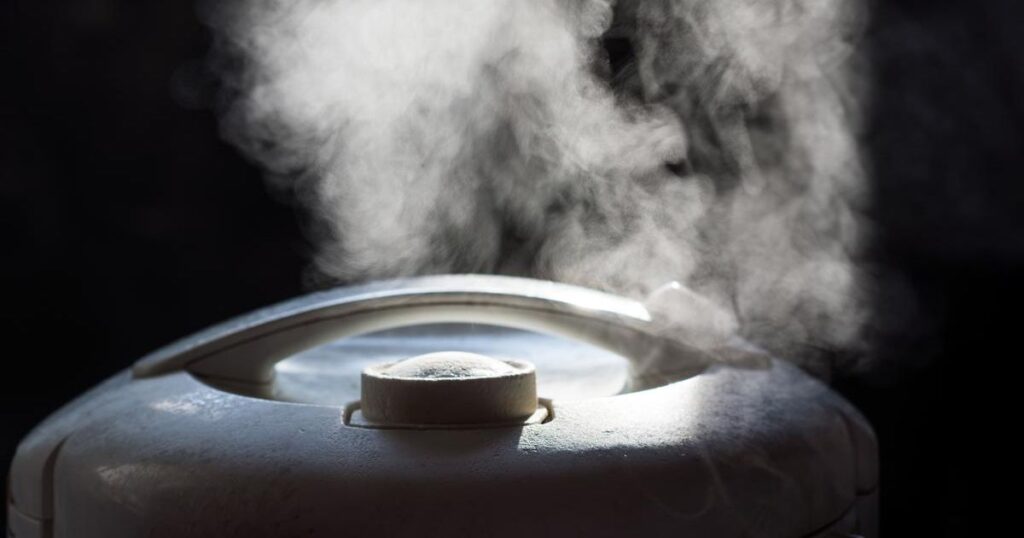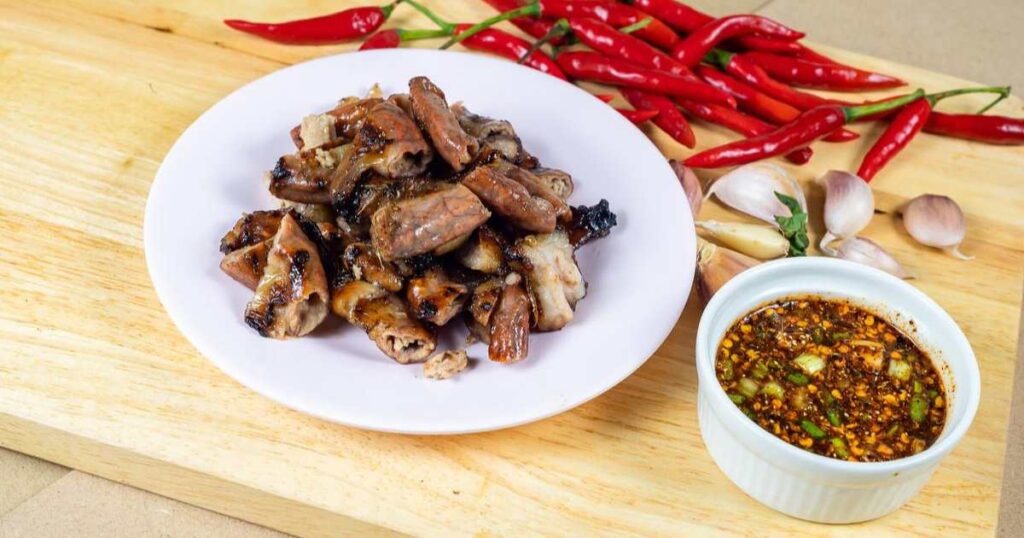When it comes to detox after a night of alcohol, many people seek out various remedies and solutions to alleviate the symptoms and cleanse their bodies. One popular option that often comes up is cranberry juice. But is cranberry juice good for alcohol detox? This article will explore the surprising truth behind the relationship between cranberry juice and alcohol detox.
We’ll explore its potential benefits, debunk common myths, and provide you with all the information you need to decide to incorporate cranberry juice into your detox routine. So, let’s uncover the truth and separate fact from fiction regarding this widely discussed detox beverage.
The Science of Alcohol Detoxification

Detoxification is a natural process in the body to eliminate toxins, including alcohol, from our system. When we consume alcohol, it is primarily metabolized by the liver, where enzymes break it down into acetaldehyde, a toxic substance. Acetaldehyde is broken down into acetate and then converted into carbon dioxide and water, eventually eliminated from the body.
Now, where does cranberry juice come into play in this process? Some proponents suggest that cranberry juice can aid in alcohol detoxification due to its high antioxidant content. Antioxidants help neutralize harmful free radicals produced during alcohol metabolism, potentially reducing oxidative stress on the liver.
Furthermore, cranberry juice is known for its diuretic properties, meaning it can increase urine production. This is beneficial for alcohol detox as it helps flush out alcohol and its byproducts from the body more efficiently.
However, it’s important to note that while cranberry juice may have some potential benefits, it is not a magical solution for alcohol detoxification. The liver is the primary organ metabolizing alcohol; no single food or drink can replace its role.
Cranberry Juice and Detoxification
Cranberry juice is a popular beverage made from the juice of cranberries, small red berries native to North America. It has a distinct tart flavor and is often consumed for its taste and potential health benefits.
The use of cranberry juice as a remedy dates back centuries. Native Americans are believed to have used cranberries for their medicinal properties, including their ability to promote urinary health. Over time, cranberry juice gained popularity as a home remedy for various ailments, including detoxification.
Cranberry juice contains several chemical compounds that contribute to its potential detoxification properties. One critical component is proanthocyanidins, potent antioxidants that can help protect cells from damage caused by free radicals. These antioxidants may play a role in reducing oxidative stress on the liver during the detoxification process.
Additionally, cranberry juice is rich in vitamin C, another potent antioxidant that supports overall immune function and may aid in detoxification. Vitamin C helps to neutralize toxins and supports the body’s natural detox mechanisms.
When it comes to detoxification, cranberry juice may offer several potential benefits. Firstly, its diuretic properties can help increase urine production, promoting the elimination of toxins, including alcohol byproducts, from the body. This increased urine flow can aid in flushing out waste materials more efficiently.
Furthermore, cranberry juice’s antioxidant content may help reduce inflammation and support liver health. By reducing oxidative stress on the liver, cranberry juice could enhance its ability to process and eliminate alcohol from the body.
However, it’s important to note that while cranberry juice may have potential benefits for detoxification, it should not be relied upon as a sole solution. A comprehensive approach to detoxification involves maintaining a balanced diet, staying hydrated, exercising regularly, and getting adequate rest.
Research on Cranberry Juice and Alcohol Detoxification
Numerous studies have examined the potential impact of cranberry juice on various aspects of alcohol detoxification. Let’s explore some of the key findings from research in this field.
Studies on the Effect of Cranberry Juice on Liver Function:
Research has shown that cranberry juice may have positive effects on liver health. A study published in the Journal of Medicinal Food found that cranberry juice exhibited protective properties against liver damage caused by alcohol in animal models. The antioxidants in cranberry juice were observed to reduce oxidative stress and inflammation in the liver.
Studies on the Effect of Cranberry Juice on Alcohol Metabolism:
The metabolism of alcohol involves several enzymatic processes in the liver. While limited studies directly examine the effects of cranberry juice on alcohol metabolism, some research suggests that cranberry juice may influence certain enzymes involved in alcohol breakdown. However, further studies are needed to establish a definitive link between cranberry juice and alcohol metabolism in humans.
Studies on the Effect of Cranberry Juice on Hangover Symptoms:
Hangover symptoms, such as headache, nausea, and fatigue, are common after excessive alcohol consumption. Although cranberry juice is often touted as a potential remedy for hangovers, limited scientific evidence addresses its effectiveness. However, cranberry juice’s hydration and antioxidant properties may help alleviate some symptoms associated with alcohol-induced dehydration and oxidative stress.
It’s worth noting that while these studies provide insights into the potential benefits of cranberry juice, more research is needed to fully understand the mechanisms and effects of alcohol detoxification in humans. Additionally, individual responses to cranberry juice may vary, and it should not be considered a standalone solution for alcohol detox.
As always, it’s essential to approach alcohol detoxification holistically, focusing on overall lifestyle changes, moderation in alcohol consumption, and consulting with healthcare professionals for personalized guidance.
How Cranberry Juice Can Aid Alcohol Detoxification
Cranberry juice offers several potential benefits that can aid in alcohol detoxification. Let’s explore some of these advantages in detail:
Antioxidant Properties of Cranberry Juice:
Cranberries are rich in antioxidants, such as polyphenols and vitamin C. These antioxidants help combat oxidative stress and reduce the damage caused by free radicals in the body. Incorporating cranberry juice into your detox routine can support your liver’s detoxification process and promote overall well-being.
Anti-inflammatory Properties of Cranberry Juice:
Alcohol consumption can lead to inflammation in the body, particularly in the liver. Cranberry juice contains compounds with anti-inflammatory properties, such as flavonoids, which may help reduce inflammation and support the liver’s recovery during detoxification.
The Potential of Cranberry Juice to Promote Liver Health:
The liver plays a crucial role in alcohol detoxification. Research suggests that cranberry juice may have hepatoprotective effects, which can help protect and support the liver’s health. The antioxidants and other beneficial compounds in cranberry juice may assist in the regeneration of liver cells and enhance their detoxification capabilities.
How Cranberry Juice Can Help with Hydration During Detoxification:
Proper hydration is essential for effective detoxification. With its high water content, Cranberry juice can contribute to your daily fluid intake, keeping you hydrated during detox. Adequate hydration supports kidney function and helps flush out toxins from the body more efficiently.
Incorporating cranberry juice into your alcohol detoxification plan can provide additional support thanks to its antioxidant properties, anti-inflammatory effects, potential liver protection, and hydration benefits. However, it’s important to remember that cranberry juice should not be relied upon as the sole method for detoxification. It should be combined with other healthy lifestyle choices, including a balanced diet, regular exercise, and sufficient rest.
Consulting with healthcare professionals or a detox specialist is recommended to ensure an individualized approach tailored to your needs. They can guide you on incorporating cranberry juice or other suitable strategies into your detoxification journey.
The Potential Risks of Using Cranberry Juice for Alcohol Detoxification

While cranberry juice can offer potential benefits during alcohol detoxification, it’s essential to be aware of the potential risks associated with its use. Let’s explore some of these risks:
The Risk of Consuming Too Much Sugar: Cranberry juice, especially the commercially available varieties, often contains added sugars to enhance the taste. Excessive sugar consumption can lead to various health issues, such as weight gain, increased blood sugar levels, and dental problems. It’s crucial to choose cranberry juice options with no added sugars or to dilute it with water to minimize sugar intake during detoxification.
The Risk of Consuming Too Much Cranberry Juice: While cranberry juice can benefit, excessive consumption can lead to gastrointestinal discomforts, such as bloating, diarrhea, or stomach cramps. Consuming cranberry juice in moderation and listening to your body’s response to avoid adverse effects is essential.
The Risk of Allergic Reactions: Some individuals may be allergic to cranberries or have sensitivities to the fruit. Allergic reactions can range from mild symptoms, such as itching and hives, to more severe reactions, like difficulty breathing or anaphylaxis. If you have a known allergy to cranberries or experience any adverse reactions after consuming cranberry juice, it’s essential to seek medical attention immediately.
To mitigate these risks, consider the following:
- Opt for natural and unsweetened cranberry juice options to avoid excessive sugar intake. Alternatively, dilute cranberry juice with water to reduce sugar content.
- Consume cranberry juice in moderation, following recommended serving sizes and listening to your body’s response.
- If you have a known allergy to cranberries or are unsure about potential allergies, it’s advisable to consult with a healthcare professional before incorporating cranberry juice into your detox routine.
By being aware of these potential risks and taking necessary precautions, you can safely incorporate cranberry juice into your alcohol detoxification journey. Remember to prioritize a well-rounded detoxification approach, including a balanced diet, regular exercise, and other healthy lifestyle choices.
Tips for Safe and Effective Alcohol Detoxification
Embarking on an alcohol detoxification journey requires careful planning and support to ensure a safe and effective process. Consider the following tips to enhance your alcohol detoxification experience:
Seek medical supervision:
It is strongly recommended to seek medical supervision during alcohol detoxification, especially if you have a history of heavy alcohol use or underlying health conditions. Healthcare professionals can provide guidance, monitor your progress, and address any potential complications that may arise during the detox process.
Gradual reduction of alcohol consumption:
Abruptly stopping alcohol intake can lead to severe withdrawal symptoms. Instead, consider a gradual reduction approach under the guidance of healthcare professionals. This method allows your body to adjust gradually and minimizes the risks associated with sudden alcohol cessation.
Support from family and friends:
Having a support system is crucial during alcohol detoxification. Reach out to family members, friends, or support groups who can offer encouragement, understanding, and accountability. Their presence can significantly contribute to your overall well-being and success throughout detox.
Self-care practices during detoxification:
Focus on self-care to support your physical and emotional well-being during detoxification. Engage in activities that promote relaxation, such as mindfulness exercises, yoga, or deep breathing. Prioritize adequate sleep, nutrition, and hydration to give your body the essential resources to heal and detoxify effectively.
Remember, alcohol detoxification can be a challenging process, both physically and emotionally. It’s essential to approach it with patience, compassion, and a commitment to your well-being. If you encounter severe withdrawal symptoms or any concerning health issues during detoxification, seek immediate medical attention.
Conclusion
Cranberry juice may offer potential benefits as a supportive element during alcohol detoxification. Its hydration properties, antioxidant content, and potential impact on urinary tract health intrigue it. However, it’s essential to approach alcohol detoxification holistically, considering factors such as balanced nutrition, exercise, and emotional support.
Cranberry juice should be seen as something other than a standalone solution but as part of a comprehensive approach to detoxification. Remember to consult with healthcare professionals, follow safe practices, and prioritize your well-being throughout detoxification.































